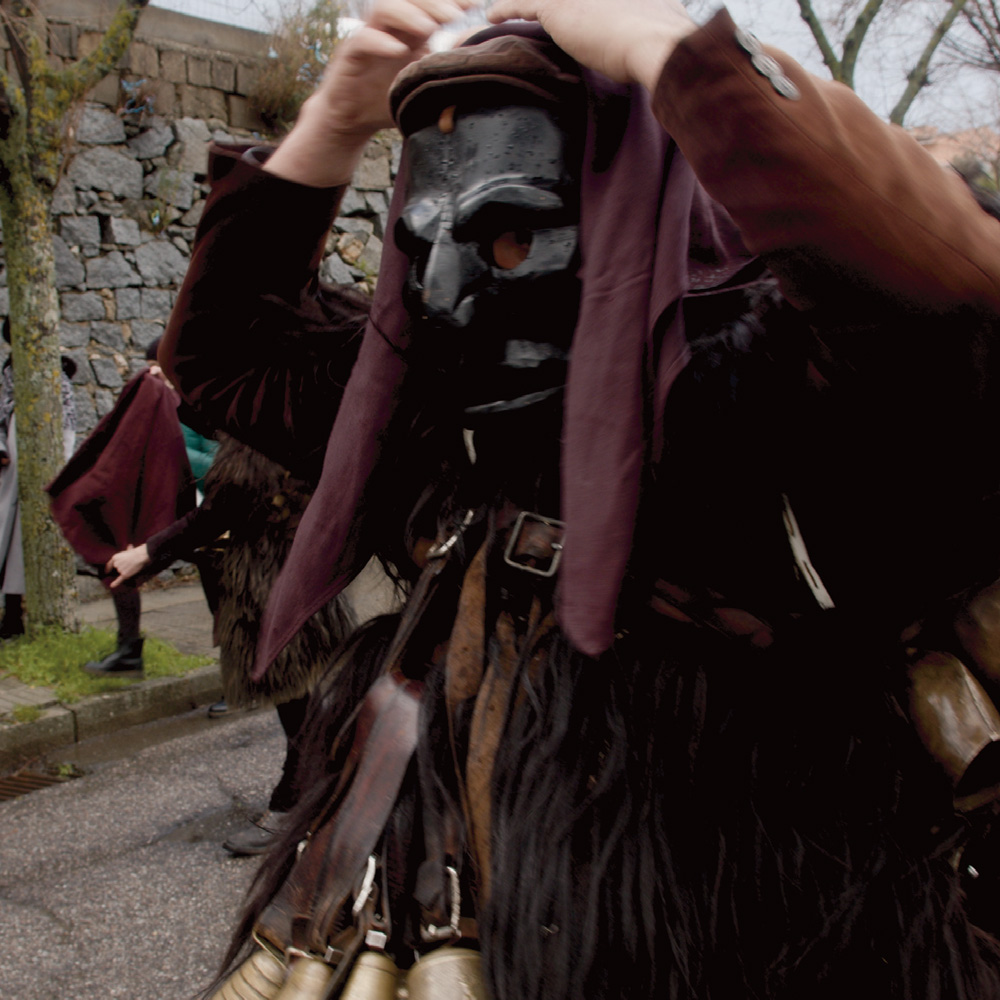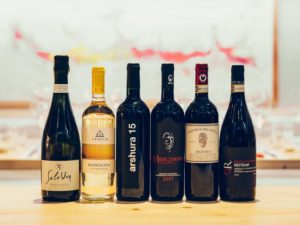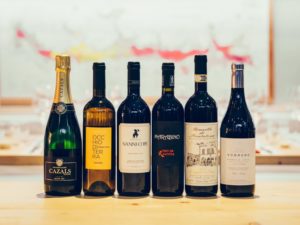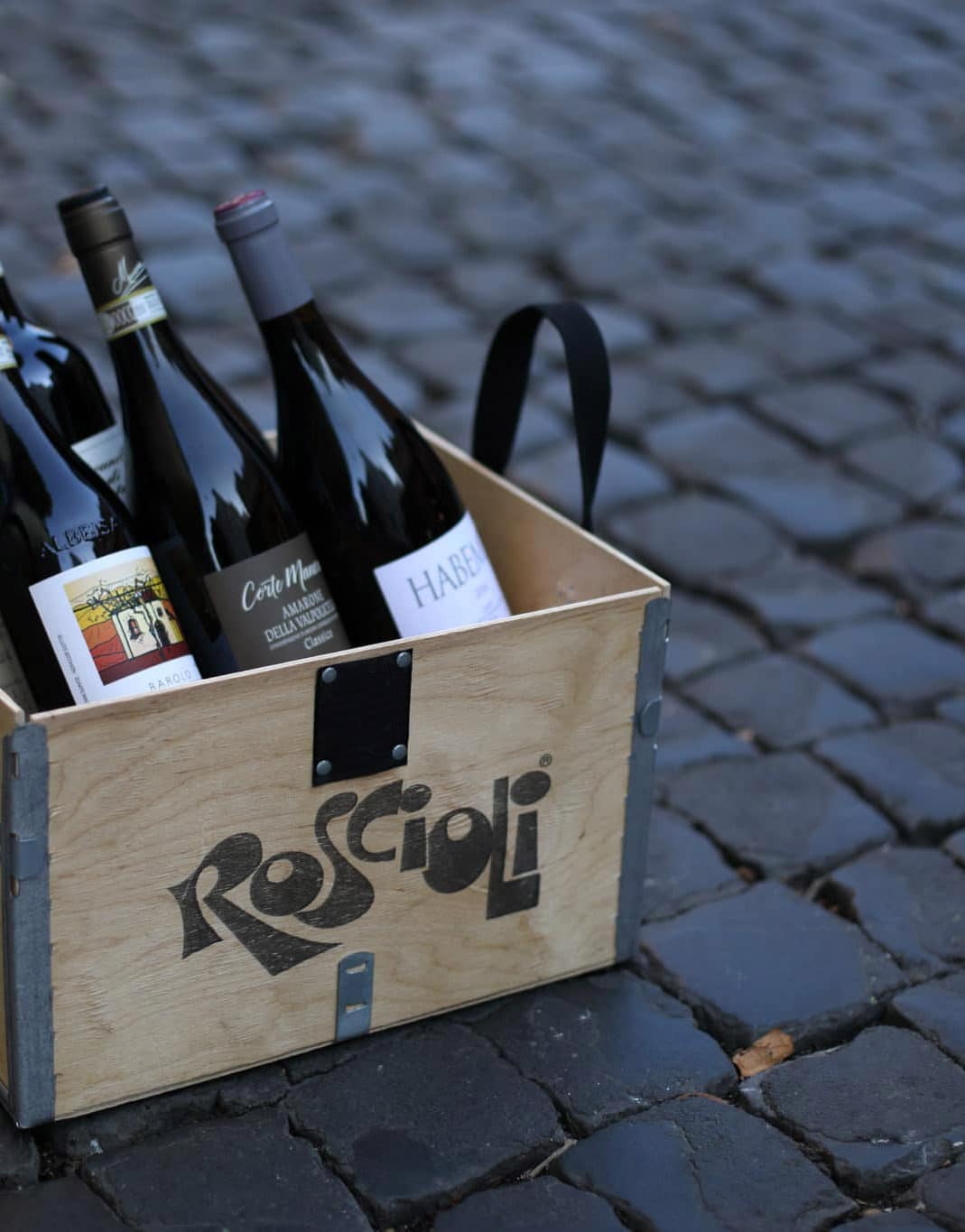The other day, looking at the map of Italy, I realized that it is surrounded by the sea. Everywhere. In the South, in the Center and in part in the North. BUT especially around the islands. If you see the map of Sardinia, for example, the sea is everywhere. A geographer friend of mine, with a twist of words, made me understand that it is characteristic of islands that they are surrounded by the sea. And if you happen to go there, in Sardinia, you will also see that it is a very special sea, where the emerald green and turquoise colors of a shiny and transparent water alternate with rocks smoothed by the wind, green Mediterranean plants and a smell, a smell that is difficult to describe. A magical place, you will say, and I say it too. But the people who live there? Where are the Sardinians? Many houses on the coast, hotels and tourist villages, restaurants and discos and thousands of boats in high season. All browning like sausages in the summer unaware of local concerns and cultures. Very few Sardinians, however. Sure, some live on the coast, but they've only recently moved there. If we go back in time, as another historical friend told me, the sea was not so well regarded in the past. Sardinians, Sicilians, Pugliesi, Calabresi and Lucani were afraid of the coasts. Apart from some Greek colonies such as Agrigento, Syracuse and Taormina, the islanders mostly lived inland because the sea was seen as a threat. A hostile place from which to expect enemies and predators, ready to plunder, plunder and kill. So in Calabria as in Sardinia in the past centuries after the fall of the Roman Empire, people withdrew inland. So the Sardinians, if you want to know them, you have to go to the hills and mountains. Far from the coasts. So I understood that you can visit a place as a tourist for 30 years and only now discover what Sardinia is. So it also happens that you go to a luxury resort in the Caribbean for years without knowing anything about what is around, about the culture, the misery, the vitality that surrounds that protected and isolated place? And I discovered all of this thanks to wine over the last few years. I discovered it thanks to you. Why, you will tell me, thanks to you? Because the more our Wine Club grew, the more I had to enter the metaphorical Forest of unknown places, in still virgin places, not corrupted by the ruthless laws of marketing, in those recesses of culture where massification and standardization of everything is still resisted. Small towns that were once a lifeline from the risk of invasions, perched on hills and mountains that are inaccessible - now that the sea is no longer a threat but an opportunity, these towns are emptying out. We go along the beach to sell useless things to useless tourists, or we migrate abroad, to Rome, London or NY convinced that life is measured in terms of its frenzy and its false opportunities. I adore Rome and NY and I would never leave them, at least for the moment, to go and live in Neoneli, Mamoiada or in a deserted village in the Calabrian hinterland. But 7 months ago, two days before my departure for NY, right in Mamoiada and Neoneli, small towns in the Sardinian hinterland, I spent two of the most beautiful, vital and intense evenings of my life.
Neoneli and Mamoiada are two seemingly useless villages that no one would ever visit without a reason. It takes two hours by car from the coast. In Neoneli there are no restaurants, hotels or bars (actually only one bar, often closed). The streets are almost always deserted and every year the population decreases. Young people run away as soon as they can from a place that has nothing to offer, no entertainment, no work. But… Oh yes, like all self-respecting stories, there is a but. But there is wine. In reality, to say that there is wine is an understatement. Neoneli has 500 inhabitants and 150 wine producers. Mamoiada, which is a metropolis in comparison, with 2 thousand inhabitants, and 300 wine producers. Considering the average family nucleus of 4-5 people, practically everyone has a vineyard. And it's not just a vineyard - it's their garden, their sanctuary. As my cultural guide Dario Cappelloni points out to me, in the town bars (as I said, only one in Neoneli and a few more in Mamoiada), sports and politics are not discussed as in all bars in Italy, but how prune the vineyard, how the harvest went, which vats to use for fermentation and refinement. 80-90 year old farmers who still carry baskets of earth from valley to mountain to avoid thinning the land, who spend whole days raking and tending and pruning and pampering their plants and their grapes. A passion and dedication that I have not seen in any other part of Italy. And they don't do it to please the market, or waiting for a journalist to give them 100 points and for their bottles to go to starred restaurants around the world. They don't care about these things because most of them just don't bottle the wine. At most, they sell it in bulk to those who pass by by chance - just remember to bring your own container. Probably, indeed certainly, it was like this in all of central and southern Italy. Etna, the wines of Vesuvius, Taurasi and perhaps once upon a time also Chianti and Barolo were regions that produced for self-subsistence and for local consumption. And I would be hypocritical if I said I'm sorry that this 'virginity' was lost. I wouldn't have opened in NY, I wouldn't have a Wine Club and I wouldn't make hundreds of videos to promote this local culture around the world. It is a very delicate subject. The day Margaret Mead met the first inhabitants of Samoa and Levi Strauss went to the Sad Tropics, that day travelers broke the membrane of isolation of local cultures by opening the door to mass culture, to commodification, to Coca Cola. And I would be lying if I said that I am in favor of isolating these places. But I can tell these places are dying, all over the world and maybe they need some support and visibility. It all lies in knowing how to point the spotlight with the right power and angle. It's all about intervening slowly, as my cultural mediators Dario and Piera suggest, trying not to upset the delicate balance of a community incapable of understanding the violent changes that surround us. The truth is that even us citizens do not have all these cultural and adaptive tools to understand and manage change. That's why we are fascinated by natural parks, isolated mountains and beaches and semi-abandoned villages. We often use these places to reorganize ideas and thoughts, in those moments when we would like to give up everything, frustrations and ambitions, to retire to a symbolic hermitage. Unfortunately, or fortunately, they are only moments. Remnants of nature and ancestral life are kept alive as if they were symbolic museums, mummies of forgotten lifestyles. They serve us, just like museums, to remind us of how we used to be. We are fascinated by it, periodically, but our lifestyle is different. And by ours I mean all of us, even the inhabitants of Neoneli and Mamoiada who have been participating with us for several years, through various devices, in the same show of things and people and consumer products. Thus, at the only Bar in Neoneli, you will find Coca Cola, in the supermarkets that do not have Philadelphia cream cheese and Pringles crisps, products and advertising signs that you will also find in the most remote of Himalayan villages (which, on closer inspection, have more traffic today on the top of Everest than on 5th Avenue. All consumer products are apparently preferred to local pecorino cheese. And it is evident and natural that on the basis of these preferences, staying and living in these urban agglomerations in the middle of nowhere is totally useless and superfluous. But that's not the point. The anthropologist Levi Strauss already wrote abundantly about it in 'Sad Tropics' about 80 years ago. Pure fruits, if they ever existed, went crazy almost a century ago. In Italy they say: the whole world is a country. I don't know in English what this popular saying suggests to you. It basically means that wherever you go, you will find similar customs. And I believe that if once this was not so true, today it is a dramatic reality. But… it's true, it's the second time I've said it but I won't go on. Yes, because there is a however, and it is the vineyard. The only local crop together with a little oil and sheep farming that survives the commodification of everything. At least here in the Sardinian mountains and hills. You see the same things around, the same electric blues of smartphones and televisions in bars and terraced houses in reinforced concrete and anodized aluminum shutters, Ikea interiors or similar by-products and the same bewildered faces that we find in all the suburbs of the world. Sometimes some enlightened mayor organizes a music and literature festival, the city people arrive with various means to pontificate on the drama of the depopulation of the villages and villages, explain to a foreign and alien public the efforts we must make to repopulate these places upstream and downstream, to the extent that and other interlayers of yesteryear and inconclusive and penetrate through the half-opened shutters of wary and indifferent glances that spy without participating. Fools, the mayor of the town and the nationally renowned writer will say. The folk music expert and deejay will snort as he presents his latest punk and electronic version of the Tenores della Barbagia. Then, after the festival, the desert again. And what's left? But what do you want to remain, a life similar to ours, made up of routines and small chores, some of us richer and others poorer, some with a fridge full of first fruits and out-of-season fruit, others with canned beans and meat and cheese to combine with a beer or an industrial drink based on artificial sugars. But if everything is really so flat and homologated, if the only thing left for us to do is shake our heads in frustration regretting the good old days, if really between us and the others the only thing that divides us is the power of purchase of the same useless, carcinogenic and polluting products because I spent the two best days of my life in Mamoiada and Neoneli? Meanwhile, I owe a huge thank you to my cultural mediator, Dario Cappelloni and also to the cultured Sardinian and disenchanted cynicism of his wife Piera Soggia (who first of all explains to me that the villages in Sardinia never really existed). Traveling with them is like taking a journey through time, understood from the point of view of special relativity. Slow and fast, past, present and future, in a game of exchange and comparison on what was, what is and what can be the landscape that surrounds us. Let me explain. Dario is a journalist who has been dealing with wine for more than 45 years, Piera a multifaceted retired intellectual who does everything except sanctify her Sardinianness. The system is that of a projective disillusionment, or of a good pessimism that warns you against easy representations of places, from the stereotype of folklore, from the myth of the noble savage and the healthy rural community. They tell you, more Piera being rightfully Sardinian than Dario, who was a disaster here, is a disaster and maybe will be a disaster. They are counter-intuitive stimuli that I need to keep my naive carelessness at bay: now I arrive and change everything and save everyone with my international projects. Every activity in the area would need these cultural mediators who help you tiptoe into places (and the Gods only know how much I need it, to tone it down). So, thanks to Dario and Piera, I enter the dressing room of the Mamuthones. I won't stay here to tell you what the Mamuthones are, when they are invited to the Armani and Dolce and Gabbana fashion shows, how that mask in Italy and in the world is the iconographic and cheap representation of the ancient and the ancestral. I don't even know how much relevance there is in the stories of its Phoenician or Martian origins.
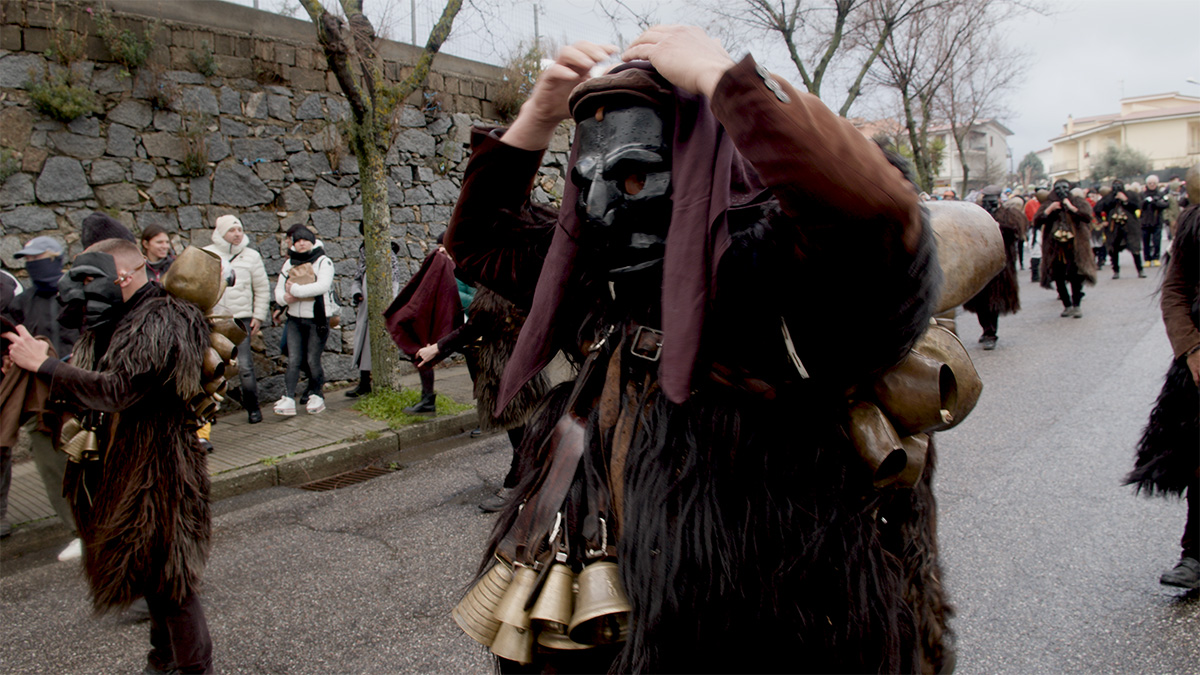
How masks similar to those have been found in Mesopotamia or under the pyramids of Egypt or in the double belt of the slippers of some creative or frustrated anthropologist. To each the ancestral story it deserves. But I know, for example, thanks to my friend Professor Pecere that the Voodoo rites are much more recent than you think, that the Nigerian Yoruba cults are more connected to colonialism than to ancestral rites, that the word shaman does not come from Mexico but from Siberia and which only became international at the end of the 18th century. In short, that even once it was not like it used to be and this idea of the enchanted and enchanted first is the daughter of the technical and industrial society, a primordial that serves to put us right with our conscience. Thus the myth of the Irish fairies who populated the Sardinian caves, bullshit says Dario without filters entering a thousand-year-old cave of Mamoiada. Here, in short, it is thanks to my scarce anthropological studies and to the cynical and realistic filter of Dario and Piera that I know I am not in Mamoiada and Neoneli in search of the truth. But… And another damn though. In short, here with our stupid cameras, aged and slightly frustrated kids playing Flaherty and De Seta out of time and place... in short, here we have access, unique among all the public, to the dressing room. Where frightened kids participate in this modern, yes modern because it is alive and current, rite of passage. Put on a sheep wool suit and bells weighing more than 30 kilos and see the faces of these guys. Oh yes, it will be folklore, it will be rhetoric, and Dario and Piera will excuse me, but these guys are there, in their part. Perhaps it is an invented, reconstructed part, perhaps it has no connection with the tradition, where legions of philologists, historians and anthropologists have squabbled in seeking its origins: last ancestral, Dionysian rite (coincidentally January 17), last form of contact with the regeneration of the earth, rite of passage. I don't know how many of these things are true, I don't know what happened 500 or 1000 years ago in this country and I don't know how relevant these rites, this clothing and these masks are, but I see those faces and I feel something, I feel an energy, an involvement, a 'passion'. Some of these guys have eyes streaming with tears, others a terrified gaze, others thoughtful, there is certainly a spectral silence, certainly no one is laughing, certainly no one is looking into the camera or addressed to the dozens of smartphones that on the other part of the room are trying to film and photograph a moment that shouldn't be filmed and photographed. Maybe this too is all a fiction, as are many modern fundamentalisms, as are many neo-rural communities that try to go back in time. But for a moment I said to myself: I'm not here for them, I'm not here to test their veracity, I'm here for me, because this thing is good for me whoever watches this video. It serves to make people understand that there are other emotions and involvements, it serves to pollute social networks with small viruses of meaning and participation, to suspend for a moment the practical, consumerist and worn-out sense of things, even through a banal product such as a short video report or this same article. They serve for me, to move me in this moment in which I am writing, to find an order of meaning, to think that these kids today are living an experience that is not an emulation of narrative schemes imposed by colonial monocultures, but a daughter of their land and of their lost sense of local identity. I know that talking about land and local identity leads right to the myth of the Mohicans and from there the step towards anthropological Nazism is short, I know that today many are talking about a return to the past, a sort of protectionist neo-conservatism that often goes strangely hand in hand with some far-left ideologies. I know this well because unfortunately and fortunately my frontal cortex is flooded with distinctions and however, with general and restricted relativities that make me believe that I am firmly planted on this shifting cultural terrain of mud and slime. But heck, this is about pleasure after all. I started this strange article by saying that it was the best two days of my life. And if I can't explain why then I'll explain how. So after dressing the masks, rehearsing their jumps to the rhythm, absolute silence in the audience, respect, contemplation, the bells ringing like Tibetan gongs and then outside in the streets it was raining, that day, a lot, but as soon as we went out it stopped, by divine intervention. However, he means a pagan god. The priest tries to bless the Mamuthones from the church at the first fire, but it's more a concession of convenience that the community makes. It can be seen from his face and walk that the prelate feels out of place. More than blessing, he seems to apologize for his intrusion. There are fires, one for each district and there are two groups of masks, one from the pro loco and one from a private association. Two because in Mamoiada there is a tradition of feuds and challenges between groups and families, some time ago (not even that long ago) they were conflicts that were settled with the lupara, today with a discreet quiet life and some grumbling. We follow the 'official' procession. There isn't much to tell, the masks turn around and at each fire you drink a wine or a local in small plastic cups and some iced desserts. The wines are spectacular. The cursed farmer's wine, they say in my world of snobbish sommeliers. Well, here we change our minds a lot. Here the cultural snobbery of the elite taster must lower its crest and tone in the face of an 'ancestral' quality (yes, when it's needed it's needed) widespread extraordinary. There isn't a single producer between Neoneli and Mamoiada who doesn't make a small masterpiece in his own way. Many will be imperfect wines, a little broken down, acetic and small reductions, but a vitality, a taste so raw, direct and Mediterranean, in short, a juice of land and place. I don't know if Italian wines were all like that once upon a time. In sommelier courses they teach you that before the arrival of oenological science and professional agronomists, wine was all vinegar in Italy. I don't even know how many history and anthropology studies many teachers of these courses have done. How much they have studied the appeals and events and understood that there is not only one before, before now, there are many. For example, there is the farmer from Pavese, who goes around with the tractor and throws tons of sulfur on the vineyards, a few years later there is his younger brother, son of the Marshall plan who was told to uproot all the old vineyards because they are not very productive, or there is the futurist farmer in the 1920s who was taught that more must be produced for the good of the country and the empire, that it is better to plant a vineyard in a reclaimed swamp than on a hill. Just like others in the Fifties who were rightly taught that an anodized aluminum window heats and refreshes more than the opening of a dammuso, and that making a roof and a square house in reinforced concrete is much more convenient than a mass of circular stones uncomfortable and inhospitable, in times when it was not understood how much money could be made by selling small plastic trulli that are turned around by snow, the famous Apulian snow. Just as the neo-rurals who, after studying business economics, decide to drop everything and return to their great-grandfather's country trullo to grow biodynamic mangoes are not remembered. Ancient farmhouses and farms where not even 100 years ago there was the good peasant life of the past, crowded by the dozens in a few malodorous spaces, with a single chamber pot to share and a single bed, a place of violence, abuse and incest. Oh my lady, it was worse when it was worse! It's not like it used to be. Fortunately, it would be otherwise.
But going back to our masks, false and deceitful, some will say, folkloristic others, I am at that moment with them, and I think they too without me, I feel alive. They go, among other things, to pay homage to the wife of a mask who passed away a few weeks ago, during an outing with her companions. A sudden heart attack. The wife looks at them, all in front of them, the 20 masks and a hundred of us. He begins to cry, he takes off his mask and they become faces, all with faces streaked with tears, big bearded Sardinian men and little boys, then all of us, put down cameras and telephones and weep with them. I didn't even understand why, caught up in the collective emotion and with other people I think. Then we proceed, for more fires and more dances and more drinks. The day ends without ending. I remember those two days seamlessly. From fires to local festivals, every street corner hides a table behind a door where you can share pasta with sheep sauce, wine, sheep stew, wine, sheep stew, wine in these endless sequences, then from organized social dinners from the community we move on to parties, to young people, to an impromptu karaoke around a fire, the good youth of Mamoiada a serious conservative notary would say looking from his balcony (if conservative notaries still existed in Mamoiada and if they ever existed), joy of living I would say that it has nothing to envy to the parties of young gentrified New Yorkers. But it's not a race or even a comparison. We end up with Signor Pinna who makes knives. He is the Hattori Hanzò of Sardinia. A knife produced every three to four days and a small production of wine. A couple of very curious and pleasure-loving Franciscans who seem to come out of a novel by Rabelais bring out a Vernaccia di Oristano. I taste it and I have an epiphany like I haven't had in years. That unique and unrepeatable moment when the taste buds vibrate and trigger a series of mnemic and sensory reactions that make you feel like a child of time, as if history were passing through you, with all its past and present memories and emotions. Whoever calls it Madeline I call it a Vernaccia from 1878. And excuse the vulgar intellectualism but I can't help but consider that Proust was 7 years old in 1878! And I'm sharing this moment with Hanzò Pinna and Fra Cristoforo and my runaway video crew. This would be enough to go home full of everything but the evening continues and without us realizing it we arrive in Neoneli where Samuel Corda is waiting for us. As I said Neoneli has 500 souls and 150 wine producers, the only one in the bottle is that of Samuel, Paolo and Salvatore, three enthusiasts who make wine from 20 different plots throughout the country, trying to give meaning and place to one of the most evocative and unknown of Italy. Incidentally, Mamoiada's Cannonau has found its way in the last 20 years thanks a lot to Dario, a lot of thanks to the producers and to the Sedilesu winery which has led the way and a little thanks to me too, I think. But in Neoneli we are in the neolithic of wine marketing. Here brand awareness is thought to be an incurable disease. They don't use technology and sulphites for the simple fact that they are things that have never arrived here. Certainly in Neoneli they have television and smartphones like us and like us they have the same cultural milieu that we have on the continent thanks to organic intellectuals such as Barbara d'Urso and educational programs such as Afternoon 5 (alas, but not even that anymore now). So don't think that if you stop someone on the street the level of conversation is different from any passerby in the suburbs of Manhattan. It is not for nothing that these two cities, New-York and Neo-Neli have the same projective suffix. The houses and their interiors are made of the same furnishings and materials as the suburbs of Detroit or Tiburtina and the same acronyms of the NetFlix series echo in the living rooms. But... Here's another one though, Samuel organized a little sensory and cultural journey for us. I knew that there were 140 wine producers in this small village but I only knew their cellar and so I asked him and Dario to give me a tour to discover this hidden and invisible rurality. Of those who have decided to stay in that country because something still binds them to that land. A thin, almost invisible thread, hidden from an inattentive traveler, behind the hermit hills there are centuries-old woods and vineyards that seem to have come out of a bucolic representation of the 1600s, while walking through the center of Neoneli without Dario and Samuel you would not notice anything . Because Piera is right, these are not villages. There is not a medieval fortress, a Gothic or Byzantine church or a Renaissance town hall to visit. There are Roman ruins and guided tours of Greek amphitheaters. Mind you there is no place richer in archeology than Sardinia, but not in these remote population centers, which in fact are not villages. We are not in Matera or Mileto to be clear. There is nothing to see or visit here. Only a sequence of concrete bricks covered with lime, often unfinished walls, some well-kept pastel yellow or faux-antique plasters, other sketches of houses left incomplete, perhaps because the owner ran away one night without notifying friends or family, perhaps because there is no money or permits to continue. A few sheet metal and warehouses, some rusty agricultural tools and others in working order and as I said before only a recently renovated bar with everything a traditional Italian bar needs: a frozen croissant from Tre Marie, San Carlo chips, Aperol and Campari spritz, Cynar and Cinzano and photos of the Manhattan skyline (a reference that returns often on this trip, or maybe I'm the one making forced connections). But there is another, however, which is the reason for our visit. There is no such high concentration of wine producers in Italy and perhaps in the world in such a distant, limited and unknown space. Especially considering that apart from Samuel nobody bottles but only produces for themselves or to sell a few liters of bulk wine. The idea was to make a short documentary of these hidden cellars, asking Dario and Samuel to guide us. It's all documented in the video we made and I add fortunately because the memories of these trips are often confused, for obvious reasons. Cellar after cellar, tasting after tasting, it is as if everything slowly began to blur in the head and more than a memory it is a flavor that remains inside, a sort of memory that becomes a tactile sensation, a gustatory experience. Everything is there hidden and anesthetized in some mysterious recess of our brain, but it does not resurface clearly, it just regurgitates the next day and in the weeks and months to come epidermally as if it were a skin irritation or a burp. A sort of Madeleine in reverse. So, I'll try to tell the sequence of what happened that night and the night before well aware that it won't be a linear story, but cyclical and confused, as the story is perhaps or once was, ah once upon a time. The first cellar is less than a garage, a damp warehouse of 20m2 or less. We all barely fit, crew, Samuel, Dario and the producer. Two or three wines are tasted from barrels covered with a layer of mold. I remember one being a Chardonnay. This is certainly anti-historical and curious. It is certainly not a local vine. Who knows when it got there. They tell me that their father had planted it. Or the grandfather, in the years in which Sardinia emigrated (as if he had now stopped, but that's another story). Perhaps that Sardinian farmer or worker had tasted that wine in a Paris or Lyon bistro and returned with that sense of the new that has never made inroads in these parts. The other barrels are from local vines such as Pascale, Nuragus (which here is called Melavaxia I don't know why) and other unknown and unpronounceable names. It is clear that the producer is waiting for our judgment, but with that expression and expectation of someone who knows that his wine is the best in the country. The same expression found on the faces of all 20 or more producers visited in these two days. We go out when it starts to get dark. It's 7pm and we have to visit 10 more wineries. Other people have joined the group, Samuel and Dario try to explain stories, relationships, families, plots to me, but I already know that soon I won't be able to follow them in their stories. These journeys remain between one garage and another, between one barrel and another, between one claim and another to say that my wine is better than the neighbor's and various teasing from the group below, jokes and jokes in one incomprehensible language that Samuel translates at first but then I decide that it doesn't matter, in any case not to understand. The competition is strong and the meanest jokes, perhaps veiled by a certain envy, are for Samuel, Paolo and Salvatore who had the arrogance of making a bottled wine, which is now sold in Rome and NY. A sweetened and fake wine, according to them, no longer territorial. A wine that has given itself to the market and is therefore artificial and corrupt. It's kind of the leitmotif of the evening. Cellar after cellar, glass after glass, you meet people who are increasingly older and more caustic and ironic about the passing of time, about life and its routine and about the awkward attempts of young people to make sense that is not strictly local to their Act. Endless discussions about how that barrel was going and whether it needed to be decanted or cleaned better. Samuel who tries to explain that a new barrel is not necessarily a crime and the older ones who argue that his wine tastes like sawdust. Laughter, some wide-toothed, some clenched. There isn't that sense of feud and challenge that you find in Mamoiada, here the community is more united but as Piera and Alessandro Dottori (autonomous and charismatic vigneron of Romangia) say, Sardinians are basically great individualists. It didn't seem like that that evening and I want to think that thanks to the allure of our cameras and my next trip to NY, people here are gathering for us, recognizing and meeting each other also thanks to us. Here it is, that spotlight that is not too strong and pointing to the side. So I like that towards the end when we go to visit one of the oldest farmers, 95 years old, who only a few months ago decided to leave the reins of the cellar to his nephew. He has a docile and kind look, he makes jokes in Sardinian that are very funny judging by the laughter that I obviously don't understand but despite everything the crew and I laugh. And it stands out kindly and liberating, we feel at the center of the world, me with my ticket to NY in my pocket (I have to check-in, I think without too much concern). The wine is everything one can imagine from such a character and a cellar, in reality every taste is like a dog, it resembles its producer, sometimes tense and nervous, sometimes relaxed and soft, all differently rustic but with a background of elegant Mediterranean scrub, as good sommeliers say. But in these tastings there are no sommeliers, here the wine is not a Grail to be raised on top of an altar, a proto-Catholic pagan ritual, it is not an alchemical and mysterious elixir to be dissected into different aromas and gustatory hints, here we are talking about how did you prune this year, how much sulfur did you put on a reverse principle to all the other corrupt farmers of the continent, here the less sulfur and the less sulfites the better. Medicinal wine, they call it, Samuel tells me. The wine of the continent is an artificial and corrupted wine. Then of course we talk about before and after, about how it once was and it surprises me to see that many elderly people don't necessarily regret the past times, who say that today's wine is better, more cared for. Just as in one of the last visits we are now 20-25 in a 15m2 cellar where all the generations are there, from 20 to 90 years old and you can't hear or see any difference. A transgenerational banquet to discuss the land and the grape harvest. I even stop asking my ritual questions such as: what keeps you here, what makes the others leave. I do not care anymore. I am here and now immersed in a unique experience, perhaps never experienced in the now one thousand and more vineyard trips made in the last 20 years. We then arrive at the last cellar and where everything happens. The meeting of the arts made of poetry, drinking, dancing, singing. Samuel, with a couple of friends, sings the first Tenores, traditional popular songs that I don't feel like explaining now because you know them so much. But Giulia, our video operator immediately understands the matrix and suggests improvising contemporary texts and phrasing, so an endless party begins, an accordion comes out, of course, then a dance that should be traditional but resembles a draft of a tarantella. It seems Giulia at a certain point, in a moment of pause, asks a question that creates a chill and embarrassment. But women? Where are the women?
To be continued…
How to Host the Perfect Italian Dinner Party
Bring Italy to you with our free guide to planning and hosting the perfect Italian dinner party!
Find recipes, wine paring recommendations and other tips for a memorable evening, all curated by our team of experts - download today here:
 SEI IN ITALIA? CLICCA QUI
SEI IN ITALIA? CLICCA QUI 
